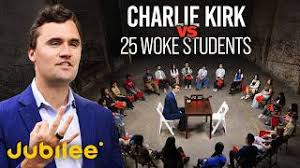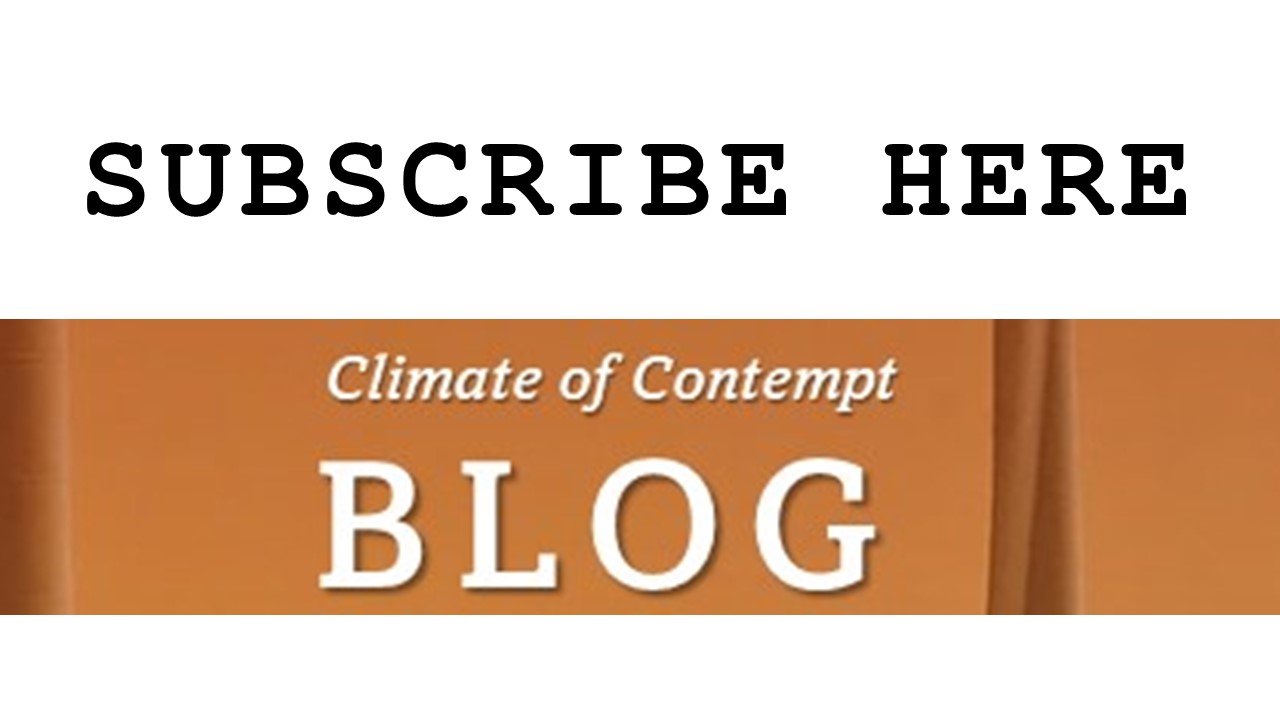One of the consequences of our balkanized, fractured, and insular information environment is that fringe political movements can grow more efficiently, away from public view. People who share the same false beliefs and harbor the same political resentments can nurture them together, unchallenged by truth or opposing views. That’s a problem because (a) many of those extremists philosophies reject basic tenets of liberal democracy, and (b) extremists tend to dominate primary elections, thereby shaping the behavior of members of Congress.
And because these ideas develop within insulated bubbles, many people are unaware of how popular and how extreme these ideas are.
A recent viral video from the Jubilee Media “Surrounded” series offered a taste of those fringe theories on the right. Progressive YouTuber Mehdi Hasan debated 20 young people who Jubilee described as “far right conservatives,” and the result was a peek into corners of the populist right in which “tribal” partisan warfare is openly embraced, and the rules of democratic competition openly rejected. Watch the video for the particulars. Warning: It is jarring.
But how big a slice of the electorate do these young extremists represent?
We can start by acknowledging that Jubilee’s “Surrounded” series is a live action version of the worst features of the internet. Each bilateral conversation is short, with participants seeking not to learn but to “win” a debate point and/or produce a viral moment. These videos seemed designed to produce viral clips that can be forwarded and promoted selectively to show how my side “utterly destroyed” the other side. Nonetheless, the extremists that Jubilee likes to feature are out there. Are they growing in number?
Polling doesn’t give us a precise answer to that question, but some evidence suggests they are. MAGA Republicans like J.D. Vance and Peter Thiel have been open about their desire for a more autocratic form of government. And many young adults believe that “democracy isn’t working.” That doesn’t mean that they embrace authoritarianism, but their increasing alienation from politics (and low voting rates) might dampen resistance to a transition to authoritarianism. Public support for anti-liberal and anti-democratic fringe philosophies like fascism and communism remains very low, though a Cato Institute poll found that 34% of young Americans view communism favorably. That number certainly alarms conservatives, but snapshot polls can reflect all sorts of human impulses, and results change depending upon what respondents are worried about at that moment in time.
One thing we do know is that voters in the two major political parties are becoming less centrist. Gallup polling has tracked the declining number of moderates in both parties over time: from 33% of Republicans and 48% of Democrats in 1994, to 18% and 35%, respectively, in 2024. Over that same period the number of Democrats identifying as liberal or very liberal has more than doubled, from 25% to 53%. And the number of Republicans identifying as conservative of very conservative has grown from 58% to 77%.[1]
Tracking polls from the American National Election Study (ANES) tell a similar story. The number of self-described extremists is growing, but from a tiny base. Between 2000 and 2020 the percentage of voters describing themselves as “extremely liberal” (as opposed “liberal” or “slightly liberal”) more than doubled, from 1.6% to 4.2%; the percentage of extreme conservatives grew from 3.3% to 5.2%.
But the ANES data also suggest that while the two major parties are growing more extreme, the middle is now dominated by self-described Independents. In 2020 only 18% of Republicans and 28% of Democrats called themselves “moderates”; but 62% of Independents described themselves that way. Gallup suggests that more Independents identify as conservative than liberal; ANES shows the two groups to be roughly equal subsets of Independents.[2] And the Gallup and ANES polls both report that there are more conservatives than liberals in the electorate.
Yet another version of this picture comes from a 2021 deeper dive into the electorate from Pew Research, depicted in the figure below. Pew counted more very conservative Republicans than there are very liberal Democrats. Indeed, looking at the small size of the progressive left in the Pew measures, it is striking that the Biden Administration was able to shepherd such a progressive piece of legislation as the Inflation Reduction Act across the finish line in 2022.
This Pew voter typology also captures the effects of populist alienation from the political system in voter categories like the “populist right,” “outsider left” and “stressed sideliners.”[3] And it may be that these populist categories also house some anti-liberal and anti-democratic voters.
Pew Research Voter Typology, 2021 (% of voters in each category)

Many of the people in the Hasan Jubilee video sound like they fit into the Populist Right category in this Pew typology, given their positive views of Donald Trump’s pardon of the January 6th convicts. So, are they representative of the Populist Right and its 23% of Republican voters? If so, that goes a long way toward explaining why congressional Republicans refuse to challenge the president’s most misguided policy decisions. Most of those congressional Republicans represent seats that are “safe” for the nominee of their party. Therefore, they cannot afford to alienate a slice of the electorate that shows up en masse to vote in primaries.
That would explain why senators who know better voted to confirm a mentally-unstable vaccine skeptic to head the Department of Health and Human Services, a Fox News personality with an alcohol problem to head the Defense Department, and an unqualified YouTuber to head the FBI. It explains their silence in the face of the partisan targeting of Department of Justice and FBI officials involved in investigating Trump’s crimes, and the disregard of statutory directives by federal agencies. And it explains why economically-literate members of Congress refuse to stand in the way of the Administration’s chaotic (and economically-illiterate) tariff policy.
So, whether or not the number of “far right conservatives” represented in the Hasan Jubilee video is growing within the general electorate, Congress’ subservient response to the Trump Administration’s destruction of democratic norms suggests that they represent a significant slice of the primary electorate.
Periodically we see or hear from principled Republicans who have had enough of this dynamic. Rep. Don Bacon (R-NE), a staunch conservative whose re-election was virtually guaranteed, has opted for retirement. Several of the House Republicans who voted to certify Joe Biden’s 2020 presidential election victory chose the same course. But in the end only voters can act as a check on the MAGA right’s authoritarian ambitions — by voting to oppose them in primaries or the general election.
The mirror image phenomenon on the left has produced mixed electoral results. Progressive and Democratic Socialist candidates did well in blue districts in the 2018 midterm elections, and the DSA candidate for New York City mayor secured the Democratic Party nomination in 2026. But their attempts to “primary” establishment Democrats have been less successful since. Still, some of the putative candidates for the Democratic presidential nomination in 2028 are already tacking to the left, reflecting the need to please voters who will vote in the party’s presidential primaries. The gerrymandering arms race will amplify the incentives politicians face to take extreme positions.
So the answer to the question in the title is a qualified “yes.” It seems clear that radical fringe philosophies can recruit and grow on the internet more efficiently than they could in the 20th century. Certainly the number of people willing to openly profess allegiance to fringe ideas seems has grown recently. Those who do not frequent the internet (or pay no attention to scholars who study these things) may be oblivious to this radicalization. But we should all pay attention, because the influence of extremists and populists has grown faster than their numbers, thanks to the rise of safe seats.
One thing we can do is to promote online resources that explain the value of respecting liberal democratic ideals like fallibilism, pluralism, fair competition and the rule of law — resources that remind us of why the drafters of the Constitution favored those ideas in the first place. Toward that end I recommend two: (a) a wonderful little book called A Thousand Small Sanities, by Adam Gopnik; and a new Substack newsletter called “The Argument.” Please check them out.
Donald Trump may be more willing than other politicians to exploit our baser instincts in destructive ways, but other ambitious politicians will follow his lead. So let’s help each other use our votes to fight the destruction of democratic norms, and to support politicians who will stand up for the rule of law, truth, fair political competition, and all the other norms on which our democratic republic depends. Before it’s too late. — David Spence
————————–
[1] Megan Brenan, U.S. Political Parties Historically Polarized Ideologically, Gallup, January 16, 2025, at https://news.gallup.com/poll/655190/political-parties-historically-polarized-ideologically.aspx.
[2] As in the ANES poll, most independents identified as moderate in the Gallup poll. Id.
[3] Pew Research Center, November 2021, “Beyond Red vs. Blue: The Political Typology,” at https://www.pewresearch.org/wp-content/uploads/sites/20/2021/11/PP_2021.11.09_political-typology_REPORT.pdf.





